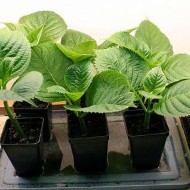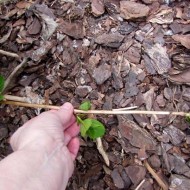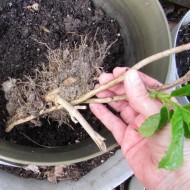Description of panicle hydrangea Sunday Fries and the nuances of its cultivation
Content
- 1 The history of the origin of the variety
- 2 Description of hydrangea Sunday Fries
- 3 Pros and cons of the variety
- 4 Video "Description of the variety of hydrangea Sunday Fries"
- 5 Rules for the care and cultivation of Sunday Fries
- 6 Diseases and pests of the variety
- 7 Use in landscape design
- 8 Reviews of hydrangea Sunday Fries
The history of the origin of the variety
For the first time panicle hydrangea Sunday Fraise (Hydrangea paniculata Sundae Fraise) was introduced to the world in 2010. Its authorship belongs to the French company SAPHO, namely the originator Jean Reno. The basis for the creation of a compact hybrid, reminiscent of strawberry ice cream in its inflorescences, was the Vanilla Fraise variety (Hydrangea paniculata Vanille Fraise). For less than a decade of its existence, the cultivar has already taken an honorable second place at the prestigious Plantarium exhibition (Holland).

Description of hydrangea Sunday Fries
If you compare the botanical description of the perennial flowering hybrid with the mother's Vanilla Freis, you can see some differences. So, Sundae Fraise has a more symmetrical appearance, as well as a compact, even crown. Erect shoots form a dense dense bush with dimensions of 1x1 m. The branches are densely leafy, covered with burgundy-brown bark. The leaf plates are dark emerald, 10-12 cm long, ovoid, with pointed tips and slightly jagged edges. The surface has a velvety texture, covered with fine pile, and has pronounced veins.
Hydrangea blooms plentiful, long - from the beginning of summer until the first frost. Panicle inflorescences are cone-shaped, about 30 cm in size, composed of many small flowers with a diameter of 20-25 mm. For the entire season, the color of the Sunday Fries changes from creamy white to pink and bright crimson. At the same time, the intensity of the color scheme depends on the pH level of the soil - on acidic soil, the shade becomes more saturated.
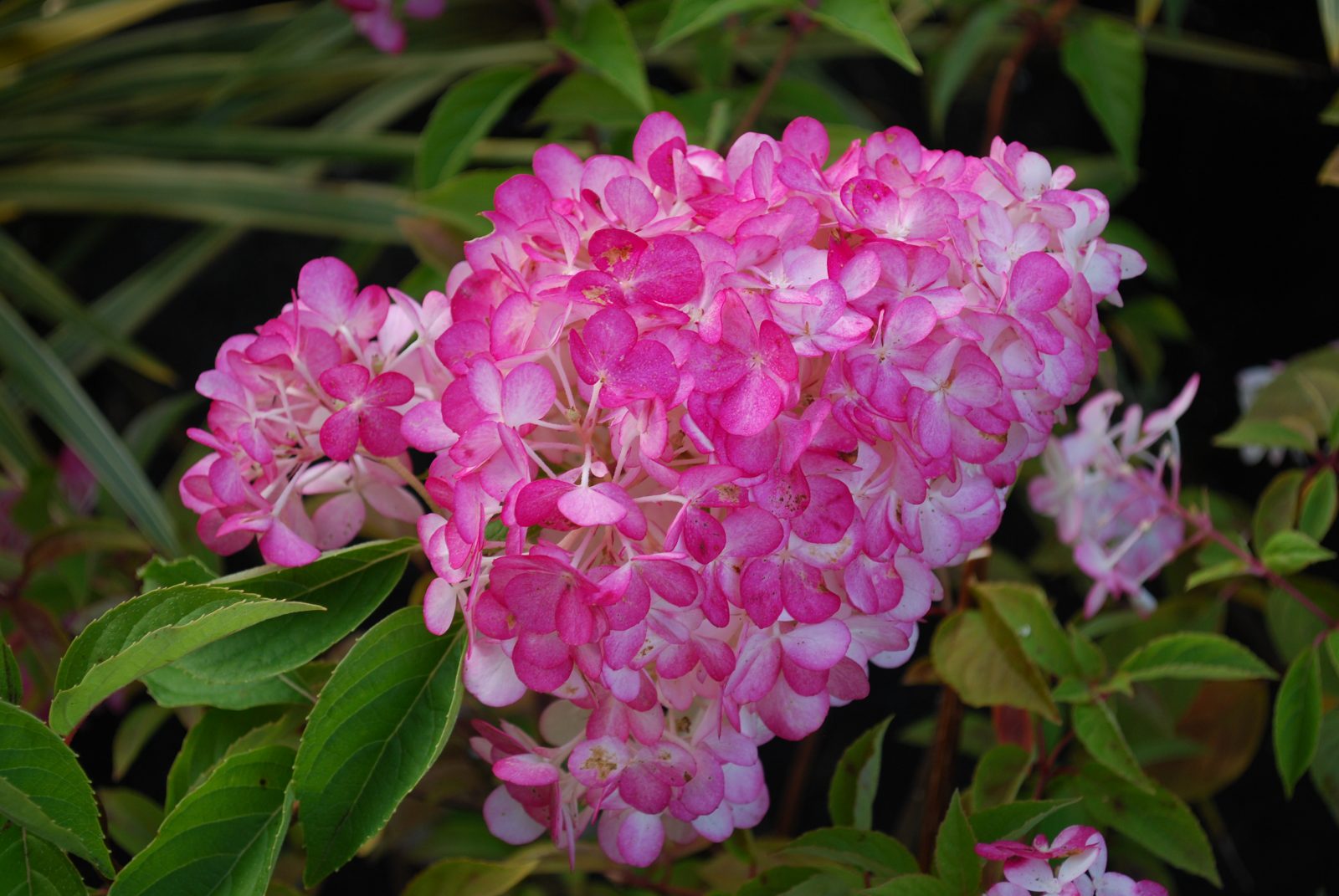
Pros and cons of the variety
Like most hybrids, Sundae Fraise has its own strengths and weaknesses.
- high decorative qualities;
- continuous flowering for 4-5 months;
- good tolerance of increased gas pollution;
- the ability to grow in shaded areas.
- low threshold of winter hardiness;
- poor tolerance to dry periods;
- the need to control the level of soil acidity.
Video "Description of the variety of hydrangea Sunday Fries"
In this video, experts talk about the merits of garden culture.
Rules for the care and cultivation of Sunday Fries
Hydrangea Sundae Fraise is not a capricious culture, but it still requires careful attention to itself. In order for the plant to quickly adapt after planting and feel comfortable in the future, we recommend that you follow simple agrotechnical rules.
Choosing a landing site and conditions of detention
The cultivar loves moderate lighting and does not react well to direct sunlight, therefore it is better to plant it in shaded areas, where the midday sun does not reach. The place should be calm, protected from drafts. The hydrangeas are best placed along fences or walls, away from plants with strong roots. The hybrid grows well on moist nutrient soils. The soil should be loamy, drained, with a high pH.
Planting is carried out in late spring or early autumn.The site is prepared in advance, digging it up with sod soil, humus, peat and adding bone meal, potassium-phosphorus feeding, urea. Seedlings are chosen at least five years of age, with a well-developed root system. During disembarkation, the following algorithm is observed:
- a month before the procedure, planting holes 50x60 cm in size are dug at intervals of 1, 5, -2, 5 m from each other;
- 24 hours before planting, 20 liters of water are poured into them;
- partially fill the pits with earth, making a small mound;
- place the seedling, gently straightening the root;
- fall asleep with the remnants of the soil mixture, leaving the root collar flush with the surface;
- form a near-trunk circle, where two buckets of water are poured;
- Lay out a layer of mulch about 10 cm thick.
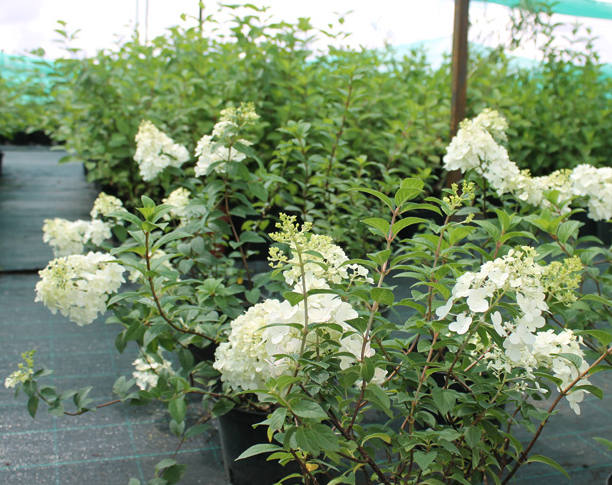
Watering and feeding
The moisture-loving Sunday Fries needs regular abundant watering. She does not tolerate drying out of the soil, and therefore every day half a bucket of settled soft water is poured under each bush. During the dry period, they carefully monitor that the land around the plant with a radius of 1.5-2 m is constantly moistened.
Fertilize the cultivar twice a month, alternating organic matter with minerals. The hybrid is well suited for bird droppings, cow dung, potash-phosphorus compositions, as well as special complexes for hydrangeas.
Loosening and mulching
To help the soil retain the moisture necessary for the plant longer, the soil around the bush immediately after planting is mulched with sawdust or peat. Since the root system of the hydrangea is close to the surface, all manipulations with the area of the trunk circle must be carried out very carefully. The soil is loosened monthly, not very deeply, at the same time removing the sprouted weeds.
Pruning
The main advantage of the Sunday Frize hydrangea is the independent formation of the correct crown. But sanitary pruning must be carried out twice a year, starting from the age of 3-4 years:
- in early spring, dry branches are removed, as well as frozen areas;
- before wintering, cut off the faded inflorescences.
Sometimes in mid-April they do a rejuvenating procedure, cutting off all the shoots under the base and leaving only a few strong young branches, cutting them by three quarters.
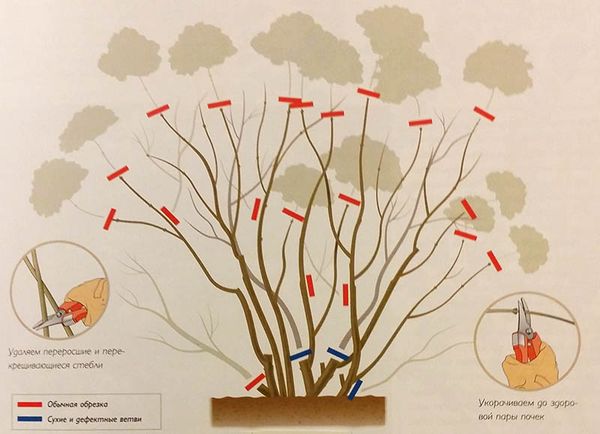
Plant propagation
Like all perennial shrubs, panicle hydrangea is propagated in several ways:
- Cuttings. They are stocked up with planting material in the middle of summer, cutting off 15 cm shoots from young shoots with 6-8 leaves. Having processed the lower cut with Kornevin solution, they are seated in containers filled with a soil mixture of peat and sand. The substrate is slightly moistened, and covered with glass jars on top. Before the appearance of new leaves, the cuttings are regularly ventilated.
- Offspring. In September, young shoots are carefully taken from the donor bush, which are then planted in a separate flowerpot. A year later, when the seedling grows up a little, it is transplanted to a permanent place.
- Layers. In the spring, a young shoot is separated from an adult bush, which is laid horizontally in the ground, leaving a small tip outside. After the formation of its own root system, it is separated from the mother plant and planted.
- By dividing the bush. Before the beginning of the vegetative period, the hydrangea is carefully dug out, trying not to damage it, the rhizome is divided, and then the “kids” are seated in separate holes.
- Propagation by rooting cuttings
- Reproduction by layering
- Reproduction by dividing the bush
Preparing the plant for winter
Sunday Fries does not like harsh winters and is able to withstand frosts not lower than -18 ° C. At the first permanent frosts, hydrangea requires a mandatory shelter. Preparation begins after leaf fall, cutting off the faded inflorescences.The land around the cultivar is mulched with sawdust or spruce branches, the shoots are laid horizontally, dry leaves are sprinkled on top. Then the shrub is covered with spunbond, and in winter, snow is added.
Diseases and pests of the variety
Due to inaccuracies in the care, the Sundae Fraise hydrangea can be affected by the following diseases:
- chlorosis - to get rid of the disease, an iron-containing top dressing is introduced under the root, and the green part is sprayed with potassium nitrate;
- downy mildew - treatment with copper sulfate or a fungicide such as "Fundazol" is used to combat it;
- gray rot - timely irrigation with Fitosporin or Fundazim helps to cope with the infection;
- ring spot - a diseased plant cannot be cured, and therefore it is uprooted and burned.
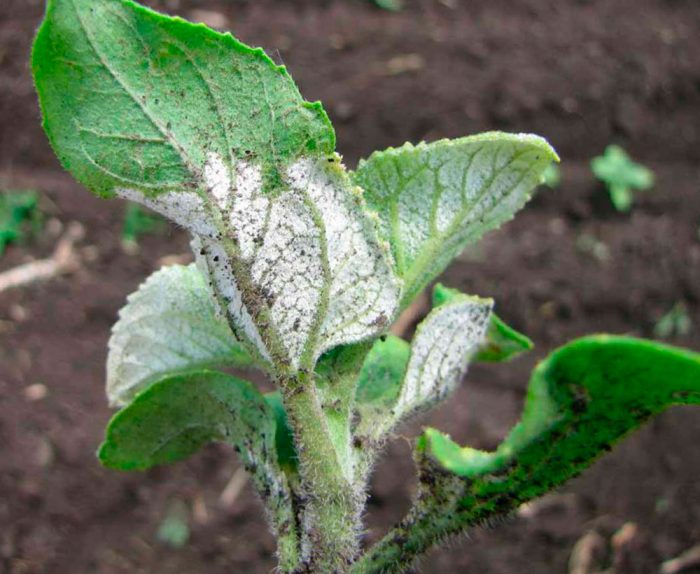
Sometimes insect pests settle on hydrangeas:
- aphid;
- spider mites;
- leaf rollers;
- bronzovki.
Treatment with insecticides (for example, "Aktara" or "Actellik") will help to get rid of small parasites.
Use in landscape design
Highly decorative Sunday Fries looks equally good in single or group planting. Alleys, paths, curbs are often decorated with luxurious compact shrubs. They are used to make hedges or decorate entrances. An excellent solution is to use panicle hydrangea in mixborders with other plants.
Sundae Fraise looks best next to conifers and stunted perennial shrubs.
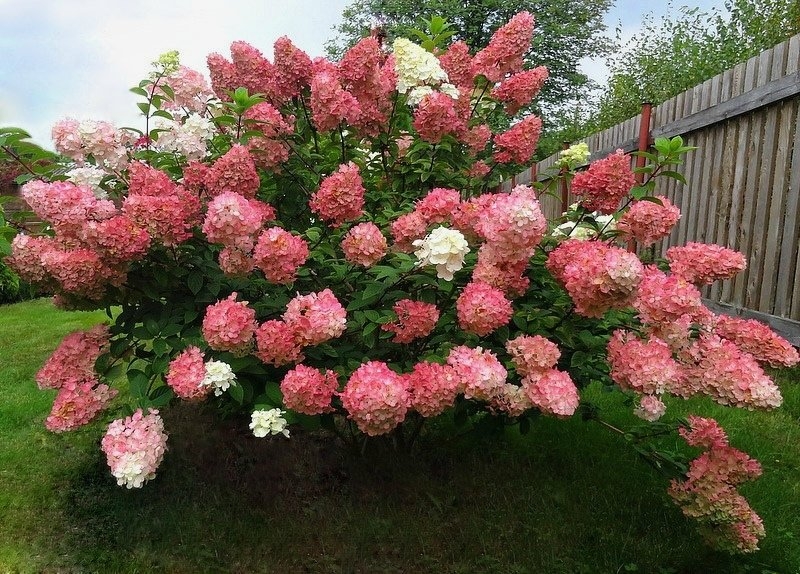
Reviews of hydrangea Sunday Fries
“The entrance to the house is decorated with pink hydrangea. I acquired seedlings a long time ago, as soon as I found out about this variety. Since then, the bush every summer until late autumn pleases with its flowering. And the most important thing is an incredibly beautiful chameleon color, which constantly changes shades. "
“I’m new to horticulture, so when I bought the Sunday Fries I was very worried that I would not be able to provide her with proper care. However, the seedling started up perfectly, the first winter it overwintered without any problems. Therefore, do not be guided by bad reviews, Sundae Fraise is an absolutely non-capricious plant and does not need complicated care. "
Hydrangea, so similar in its inflorescences to strawberry ice cream, will decorate any garden area. With the right approach, it will thank you with abundant flowering and prolong the beauty of the garden until late autumn.

